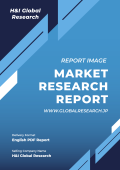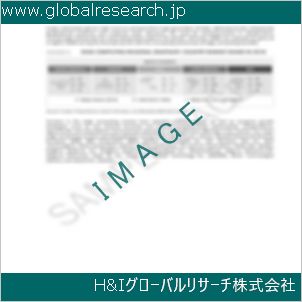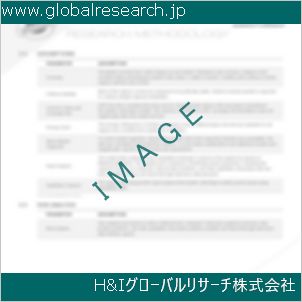1 Waterborne UV Resin Market Overview
1.1 Product Definition
1.2 Waterborne UV Resin Segment by Type
1.2.1 Global Waterborne UV Resin Market Value Growth Rate Analysis by Type 2022 VS 2029
1.2.2 Lotion Resin
1.2.3 Water-Dispersible Resin
1.2.4 Water-Soluble Resin
1.3 Waterborne UV Resin Segment by Application
1.3.1 Global Waterborne UV Resin Market Value Growth Rate Analysis by Application: 2022 VS 2029
1.3.2 Industrial
1.3.3 Automobile Industry
1.3.4 Coatings
1.3.5 Others
1.4 Global Market Growth Prospects
1.4.1 Global Waterborne UV Resin Production Value Estimates and Forecasts (2018-2029)
1.4.2 Global Waterborne UV Resin Production Capacity Estimates and Forecasts (2018-2029)
1.4.3 Global Waterborne UV Resin Production Estimates and Forecasts (2018-2029)
1.4.4 Global Waterborne UV Resin Market Average Price Estimates and Forecasts (2018-2029)
1.5 Assumptions and Limitations
2 Market Competition by Manufacturers
2.1 Global Waterborne UV Resin Production Market Share by Manufacturers (2018-2023)
2.2 Global Waterborne UV Resin Production Value Market Share by Manufacturers (2018-2023)
2.3 Global Key Players of Waterborne UV Resin, Industry Ranking, 2021 VS 2022 VS 2023
2.4 Global Waterborne UV Resin Market Share by Company Type (Tier 1, Tier 2 and Tier 3)
2.5 Global Waterborne UV Resin Average Price by Manufacturers (2018-2023)
2.6 Global Key Manufacturers of Waterborne UV Resin, Manufacturing Base Distribution and Headquarters
2.7 Global Key Manufacturers of Waterborne UV Resin, Product Offered and Application
2.8 Global Key Manufacturers of Waterborne UV Resin, Date of Enter into This Industry
2.9 Waterborne UV Resin Market Competitive Situation and Trends
2.9.1 Waterborne UV Resin Market Concentration Rate
2.9.2 Global 5 and 10 Largest Waterborne UV Resin Players Market Share by Revenue
2.10 Mergers & Acquisitions, Expansion
3 Waterborne UV Resin Production by Region
3.1 Global Waterborne UV Resin Production Value Estimates and Forecasts by Region: 2018 VS 2022 VS 2029
3.2 Global Waterborne UV Resin Production Value by Region (2018-2029)
3.2.1 Global Waterborne UV Resin Production Value Market Share by Region (2018-2023)
3.2.2 Global Forecasted Production Value of Waterborne UV Resin by Region (2024-2029)
3.3 Global Waterborne UV Resin Production Estimates and Forecasts by Region: 2018 VS 2022 VS 2029
3.4 Global Waterborne UV Resin Production by Region (2018-2029)
3.4.1 Global Waterborne UV Resin Production Market Share by Region (2018-2023)
3.4.2 Global Forecasted Production of Waterborne UV Resin by Region (2024-2029)
3.5 Global Waterborne UV Resin Market Price Analysis by Region (2018-2023)
3.6 Global Waterborne UV Resin Production and Value, Year-over-Year Growth
3.6.1 North America Waterborne UV Resin Production Value Estimates and Forecasts (2018-2029)
3.6.2 Europe Waterborne UV Resin Production Value Estimates and Forecasts (2018-2029)
3.6.3 China Waterborne UV Resin Production Value Estimates and Forecasts (2018-2029)
3.6.4 Japan Waterborne UV Resin Production Value Estimates and Forecasts (2018-2029)
4 Waterborne UV Resin Consumption by Region
4.1 Global Waterborne UV Resin Consumption Estimates and Forecasts by Region: 2018 VS 2022 VS 2029
4.2 Global Waterborne UV Resin Consumption by Region (2018-2029)
4.2.1 Global Waterborne UV Resin Consumption by Region (2018-2023)
4.2.2 Global Waterborne UV Resin Forecasted Consumption by Region (2024-2029)
4.3 North America
4.3.1 North America Waterborne UV Resin Consumption Growth Rate by Country: 2018 VS 2022 VS 2029
4.3.2 North America Waterborne UV Resin Consumption by Country (2018-2029)
4.3.3 United States
4.3.4 Canada
4.4 Europe
4.4.1 Europe Waterborne UV Resin Consumption Growth Rate by Country: 2018 VS 2022 VS 2029
4.4.2 Europe Waterborne UV Resin Consumption by Country (2018-2029)
4.4.3 Germany
4.4.4 France
4.4.5 U.K.
4.4.6 Italy
4.4.7 Russia
4.5 Asia Pacific
4.5.1 Asia Pacific Waterborne UV Resin Consumption Growth Rate by Region: 2018 VS 2022 VS 2029
4.5.2 Asia Pacific Waterborne UV Resin Consumption by Region (2018-2029)
4.5.3 China
4.5.4 Japan
4.5.5 South Korea
4.5.6 China Taiwan
4.5.7 Southeast Asia
4.5.8 India
4.6 Latin America, Middle East & Africa
4.6.1 Latin America, Middle East & Africa Waterborne UV Resin Consumption Growth Rate by Country: 2018 VS 2022 VS 2029
4.6.2 Latin America, Middle East & Africa Waterborne UV Resin Consumption by Country (2018-2029)
4.6.3 Mexico
4.6.4 Brazil
4.6.5 Turkey
4.6.6 GCC Countries
5 Segment by Type
5.1 Global Waterborne UV Resin Production by Type (2018-2029)
5.1.1 Global Waterborne UV Resin Production by Type (2018-2023)
5.1.2 Global Waterborne UV Resin Production by Type (2024-2029)
5.1.3 Global Waterborne UV Resin Production Market Share by Type (2018-2029)
5.2 Global Waterborne UV Resin Production Value by Type (2018-2029)
5.2.1 Global Waterborne UV Resin Production Value by Type (2018-2023)
5.2.2 Global Waterborne UV Resin Production Value by Type (2024-2029)
5.2.3 Global Waterborne UV Resin Production Value Market Share by Type (2018-2029)
5.3 Global Waterborne UV Resin Price by Type (2018-2029)
6 Segment by Application
6.1 Global Waterborne UV Resin Production by Application (2018-2029)
6.1.1 Global Waterborne UV Resin Production by Application (2018-2023)
6.1.2 Global Waterborne UV Resin Production by Application (2024-2029)
6.1.3 Global Waterborne UV Resin Production Market Share by Application (2018-2029)
6.2 Global Waterborne UV Resin Production Value by Application (2018-2029)
6.2.1 Global Waterborne UV Resin Production Value by Application (2018-2023)
6.2.2 Global Waterborne UV Resin Production Value by Application (2024-2029)
6.2.3 Global Waterborne UV Resin Production Value Market Share by Application (2018-2029)
6.3 Global Waterborne UV Resin Price by Application (2018-2029)
7 Key Companies Profiled
7.1 UCB
7.1.1 UCB Waterborne UV Resin Corporation Information
7.1.2 UCB Waterborne UV Resin Product Portfolio
7.1.3 UCB Waterborne UV Resin Production, Value, Price and Gross Margin (2018-2023)
7.1.4 UCB Main Business and Markets Served
7.1.5 UCB Recent Developments/Updates
7.2 DSM
7.2.1 DSM Waterborne UV Resin Corporation Information
7.2.2 DSM Waterborne UV Resin Product Portfolio
7.2.3 DSM Waterborne UV Resin Production, Value, Price and Gross Margin (2018-2023)
7.2.4 DSM Main Business and Markets Served
7.2.5 DSM Recent Developments/Updates
7.3 BASF
7.3.1 BASF Waterborne UV Resin Corporation Information
7.3.2 BASF Waterborne UV Resin Product Portfolio
7.3.3 BASF Waterborne UV Resin Production, Value, Price and Gross Margin (2018-2023)
7.3.4 BASF Main Business and Markets Served
7.3.5 BASF Recent Developments/Updates
7.4 Allnex
7.4.1 Allnex Waterborne UV Resin Corporation Information
7.4.2 Allnex Waterborne UV Resin Product Portfolio
7.4.3 Allnex Waterborne UV Resin Production, Value, Price and Gross Margin (2018-2023)
7.4.4 Allnex Main Business and Markets Served
7.4.5 Allnex Recent Developments/Updates
7.5 Covestro
7.5.1 Covestro Waterborne UV Resin Corporation Information
7.5.2 Covestro Waterborne UV Resin Product Portfolio
7.5.3 Covestro Waterborne UV Resin Production, Value, Price and Gross Margin (2018-2023)
7.5.4 Covestro Main Business and Markets Served
7.5.5 Covestro Recent Developments/Updates
7.6 Solvay S.A.
7.6.1 Solvay S.A. Waterborne UV Resin Corporation Information
7.6.2 Solvay S.A. Waterborne UV Resin Product Portfolio
7.6.3 Solvay S.A. Waterborne UV Resin Production, Value, Price and Gross Margin (2018-2023)
7.6.4 Solvay S.A. Main Business and Markets Served
7.6.5 Solvay S.A. Recent Developments/Updates
7.7 IGM Resin
7.7.1 IGM Resin Waterborne UV Resin Corporation Information
7.7.2 IGM Resin Waterborne UV Resin Product Portfolio
7.7.3 IGM Resin Waterborne UV Resin Production, Value, Price and Gross Margin (2018-2023)
7.7.4 IGM Resin Main Business and Markets Served
7.7.5 IGM Resin Recent Developments/Updates
7.8 Perstorp
7.8.1 Perstorp Waterborne UV Resin Corporation Information
7.8.2 Perstorp Waterborne UV Resin Product Portfolio
7.8.3 Perstorp Waterborne UV Resin Production, Value, Price and Gross Margin (2018-2023)
7.8.4 Perstorp Main Business and Markets Served
7.7.5 Perstorp Recent Developments/Updates
7.9 Alberdingk Boley
7.9.1 Alberdingk Boley Waterborne UV Resin Corporation Information
7.9.2 Alberdingk Boley Waterborne UV Resin Product Portfolio
7.9.3 Alberdingk Boley Waterborne UV Resin Production, Value, Price and Gross Margin (2018-2023)
7.9.4 Alberdingk Boley Main Business and Markets Served
7.9.5 Alberdingk Boley Recent Developments/Updates
7.10 Imperial Chemical Industries
7.10.1 Imperial Chemical Industries Waterborne UV Resin Corporation Information
7.10.2 Imperial Chemical Industries Waterborne UV Resin Product Portfolio
7.10.3 Imperial Chemical Industries Waterborne UV Resin Production, Value, Price and Gross Margin (2018-2023)
7.10.4 Imperial Chemical Industries Main Business and Markets Served
7.10.5 Imperial Chemical Industries Recent Developments/Updates
7.11 MCPP Germany GmbH(Mitsubishi Chemical Corporation)
7.11.1 MCPP Germany GmbH(Mitsubishi Chemical Corporation) Waterborne UV Resin Corporation Information
7.11.2 MCPP Germany GmbH(Mitsubishi Chemical Corporation) Waterborne UV Resin Product Portfolio
7.11.3 MCPP Germany GmbH(Mitsubishi Chemical Corporation) Waterborne UV Resin Production, Value, Price and Gross Margin (2018-2023)
7.11.4 MCPP Germany GmbH(Mitsubishi Chemical Corporation) Main Business and Markets Served
7.11.5 MCPP Germany GmbH(Mitsubishi Chemical Corporation) Recent Developments/Updates
7.12 Wanhua Chemical Group
7.12.1 Wanhua Chemical Group Waterborne UV Resin Corporation Information
7.12.2 Wanhua Chemical Group Waterborne UV Resin Product Portfolio
7.12.3 Wanhua Chemical Group Waterborne UV Resin Production, Value, Price and Gross Margin (2018-2023)
7.12.4 Wanhua Chemical Group Main Business and Markets Served
7.12.5 Wanhua Chemical Group Recent Developments/Updates
7.13 Guangzhou WUX Material
7.13.1 Guangzhou WUX Material Waterborne UV Resin Corporation Information
7.13.2 Guangzhou WUX Material Waterborne UV Resin Product Portfolio
7.13.3 Guangzhou WUX Material Waterborne UV Resin Production, Value, Price and Gross Margin (2018-2023)
7.13.4 Guangzhou WUX Material Main Business and Markets Served
7.13.5 Guangzhou WUX Material Recent Developments/Updates
7.14 Miwon Specialty Chemical
7.14.1 Miwon Specialty Chemical Waterborne UV Resin Corporation Information
7.14.2 Miwon Specialty Chemical Waterborne UV Resin Product Portfolio
7.14.3 Miwon Specialty Chemical Waterborne UV Resin Production, Value, Price and Gross Margin (2018-2023)
7.14.4 Miwon Specialty Chemical Main Business and Markets Served
7.14.5 Miwon Specialty Chemical Recent Developments/Updates
8 Industry Chain and Sales Channels Analysis
8.1 Waterborne UV Resin Industry Chain Analysis
8.2 Waterborne UV Resin Key Raw Materials
8.2.1 Key Raw Materials
8.2.2 Raw Materials Key Suppliers
8.3 Waterborne UV Resin Production Mode & Process
8.4 Waterborne UV Resin Sales and Marketing
8.4.1 Waterborne UV Resin Sales Channels
8.4.2 Waterborne UV Resin Distributors
8.5 Waterborne UV Resin Customers
9 Waterborne UV Resin Market Dynamics
9.1 Waterborne UV Resin Industry Trends
9.2 Waterborne UV Resin Market Drivers
9.3 Waterborne UV Resin Market Challenges
9.4 Waterborne UV Resin Market Restraints
10 Research Finding and Conclusion
11 Methodology and Data Source
11.1 Methodology/Research Approach
11.1.1 Research Programs/Design
11.1.2 Market Size Estimation
11.1.3 Market Breakdown and Data Triangulation
11.2 Data Source
11.2.1 Secondary Sources
11.2.2 Primary Sources
11.3 Author List
11.4 Disclaimer
| ※参考情報 水性UVレジンは、近年注目を集めている新しいタイプの樹脂材料です。この材料は、従来の溶剤系レジンと比較して環境に優しい特性を持ち、多様な用途で利用されています。水性UVレジンの特徴や種類、用途、そして関連技術について詳しく説明いたします。 まず、水性UVレジンの定義についてです。水性UVレジンは水を基剤とした紫外線硬化型樹脂であり、主に水と低濃度のモノマーを含むエマルジョンから構成されています。紫外線を照射することによって、樹脂が急速に硬化し、しっかりとした膜を形成します。この特性により、素早い加工が可能で、また溶剤を使用しないため、環境負荷が軽減される点が大きな魅力です。 次に、水性UVレジンの特徴について触れます。第一に、その優れた安全性があります。水性のため、揮発性有機化合物(VOC)の放出がほとんどなく、健康への影響が少ないとされています。また、扱いやすさも特徴の一つであり、従来の溶剤系レジンに比べて臭いが少ないため、作業環境も快適です。 さらに、水性UVレジンは非常に速い硬化速度を持っています。紫外線を照射することで、数秒から数分で硬化が完了し、生産性が向上します。この特性は、特に大量生産を行う工場において重要であり、作業の効率化に寄与しています。 水性UVレジンにはいくつかの種類がありますが、基本的に、特性や用途に応じて様々な配合が可能です。一般的には、アクリル系、ポリウレタン系、エポキシ系といった異なる化学基盤を持つ水性UVレジンがあり、それぞれ異なる特性を持っています。アクリル系は優れた透明性や耐候性を持ち、ポリウレタン系は柔軟性や耐摩耗性が高いとされます。一方、エポキシ系は強い接着力や耐薬品性が特長です。 使用用途に関しては、水性UVレジンは非常に多岐にわたります。主な用途としては、印刷、コーティング、接着、さらには部品の成形などが挙げられます。特に、電子機器や医療器具の製造において、その優れた硬化特性と安全性が求められるため、需要が高まっています。また、工芸品やDIY関連でも利用されることが多く、家庭でも気軽に使用できるという利点があります。 水性UVレジンは、その利点を最大限に引き出すために、いくつかの関連技術が発展しています。例えば、紫外線硬化装置の進化があります。高効率なUVライトを使用することで、より短時間で高品質な硬化が実現されており、生産ラインでの運用が容易になっています。また、レジンの改良により、異なる基材との接着性が向上し、幅広い素材に対応できるようになっています。 加えて、環境への配慮から、リサイクル技術やエネルギー効率の良い製造方法も研究されています。水性UVレジンの製造過程で必要なエネルギーを削減し、環境負荷を低減するための技術開発が続けられているのです。これにより、持続可能な製品の提供を目指す動きが見られます。 さらに、水性UVレジンには新たな市場とニーズを開拓する可能性が広がっています。新しいテクノロジーが導入されることで、さらなる特性の改善や新しい用途が生まれることが期待されています。例えば、耐久性や弾力性を兼ね備えた特殊な水性UVレジンが求められる場面も増えてきています。これにより、さらなる製品の多様化が進むことでしょう。 総じて言えることは、水性UVレジンはそのメリットを活かしつつ、今後の市場において重要な役割を果たすと考えられます。環境に優しく、高速で硬化し、多様な用途に応じた特性を持つこの材料は、今後ますますその需要が高まることが予想されます。技術の進化と共に、より革新的な製品が生み出されることで、私たちの生活や産業において広く利用されることでしょう。そして、この流れは水性UVレジンが持つ可能性をさらに広げることにつながります。 |
❖ 免責事項 ❖
http://www.globalresearch.jp/disclaimer












